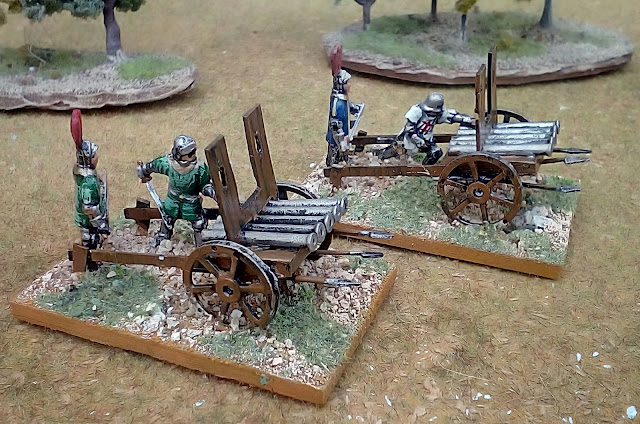The 79th Queen's Own Cameron Highlanders leaves their transports and prepares to entrench at the village of Zidane not far from Dunkirk.
I was thinking about making Scottish infantry for the 1940 BEF since I stumbled on this picture of the 79th at the river Escaut in May 1940 in the last campaign where the Scots used the Kilt:
Then when reading a little about the Scots in the 1940 BEF I was admired by its courage and determination specially when ordered to delay the Germans for the Dunkirk evacuation.
At first I thought about using the HAT WWI Highlanders (still in Service Dress but that is still possible in 1940) but those figures have the apron on the kilt and the box has no support weapons. So my usual conversions started. The main idea was to use the obvious old Airfix, Esci and Italeri Napoleonic Highlanders legs and kilts in the bodies of equally old Matchbox, Airfix and Revell British WWII figures both desert and battle dress uniforms.

The problem is to get the two parts attached. Simply by gluing them with soft plastic superglue doesn't solve the problem as the joint is never perfect with parts of the equipment cut in half by the figures waists. What I did was to drill a 2mm hole in the legs part and to cut the body in a triangular shape in the waist area. This allows for the triangular area to be melted with a lighter and stuck while its boiling in the leg's drilled hole. A good part of the melt will go into the drilled hole and you can have a firmly stucked figure. Believe me. I did it many times and works. After many burned fingers you start to master this technic. Besides all of us have these figures somewhere in a shoe box and if you destroy a number of them you still have plenty to keep on trying.
After a few hours (maybe more than a few…) you have the the full battalion ready.
The HQ stand has a few other options: an unchanged Bagpiper from 8th Army Matchbox set, and a Revell figure with two component paste uniting the two sides of the shorts and giving the illusion of a kilt. This figure also became a radio man with the addition of the Airfix radio.
The painted group.The Revell officer I added a cane and binoculars. All figures also got the usual BEF gas mask bag.
The HQ, MG and mortar platoons are all here. The laying down figures have legs and skirts from the Esci Scottish running figure.
The Boys AT rifles were made from carefully cutting a few extra parts of the Matchbox Bren figures and adding a piece of 1mm EverGreen plastic. The Vickers MMG was the trickiest with added parts to make it higher and a new watercooler device. If you have these sets of figures you will probably recognize most of them.
No, these guys are not performing Shakespeare but manning the 3'' mortar. I used the mortar from Matchbox but dont forget to cut the top part of the ring connecting the bipod to the tube for a better miniature of the 3'' mortar.
A company has the usual mixture of torsos and legs. The Revell 8th Army box is very useful as you can use the bereted Scottish figures and make the kilt out of the shorts. This box also has the true model of the Thompson M1928 SMG used by the BEF.
The 79th used the battle dress tucked into the Kilt and and you can simulate this with figures whose arms and Enfield rifle are covering the waist. Some of the figures like the NCO with Thompson SMG have the Service Dress from 1908 which was still used ocasionally. For that, mold quicky and carefully the melted plastic of the waist joint while you still can!
B company. The kneeled figures are a problem but after a few "losses" you can have some nice kneeling Scots.
B company painted.
C company attacks!! These older sets of British are also useful as most of them have the helmets without netting or camouflage as a good part of the BEF did.
C company relentlessly presses the attack.
D company. The NCO has another useful early Thompson SMG.
D company painted. I felt glad in the end as I managed to lower bit a little a shoe box of maybe 10+ boxes of old British plastic infantry. Even if its time consuming making Scottish BEF infantry this way is quite challenging and i'll may do a couple more battalions in the future and complete a brigade of them.
Maybe this was the most difficult figure of this group. Three of them were made and cutting the figure in half without cutting its right arm is not easy. Then, burning the torso without burning the Bren is again tricky.
Next: Maybe more Hungarian for Mohacs 1526 or French Foreign Legion for Bir Hakeim 1942.




















































